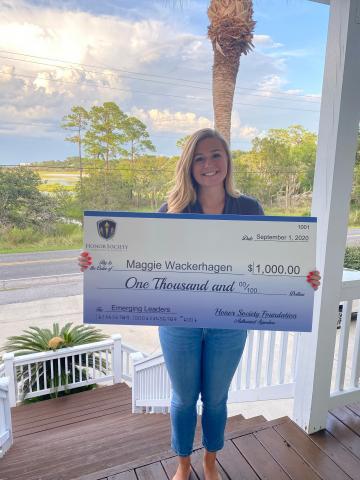The State of Higher Education
Aug 18,2020
This is from the Honor Society published book called by . To learn more about the book or to purchase a copy, .
The State of Higher Education
“Education is the most powerful weapon which you can use to change the world.” – Nelson Mandela
It is important to understand that the intensified concentration of wealth in the U.S. over the last 30-years is what has contributed to the higher education conundrum today. During this period, the richeꦛst have come to own more private wealth than the bottom 90%. The top 10% of Americans own 71% of all private wealth. This divide is sharp and it is growing.
The problem is that these separating socioeconomic groups are mirrored by the country’s higher education system. The top and bottom strata have grown so independent from one another that universities “at the top” have different values, missions, and resource🐬s available to their students than community colleges, for example. Rapidly rising tuiti༒ons have made the country’s elite network of universities accessible only to the children of the connected and the wealthy. They see attending schools like Harvard, Yale, or Princeton as a birthright, and one they are most certainly willing to pay for if their child doesn’t qualify on their own. Just look at this statistic: 14% of Yale’s undergraduates are legacies, also known as sons and daughters of previous attendees.
And then there’s Harvard’s “Committee on University Resources,” which is res💙tricted to those that have given at least $1 million back to the university. Of the 340 people who sit on this committee and have children, 336 children are currently enrolled at Harvard – coincidence?
These universities a🦩re the breeding ground from which American plutocracy can replicate itself. These selective colleges are doing their best to retain their top tier status by shutting out those that can’t afford their insane, college tuitions. Yes, the average tuition for a single year at one of America’s most elite universities ꩲis more than the average income of American citizens (falls in the $35,000 to $45,000 range). Scholarships are a great way to start the battle of affording higher education today.
Impossible Costs = Impossible Management?
Something interes🌊ting started happening at the end of 2019. Universities and colleges across the U.S. were forced to close their doors due to the impossible cost to attend their programs. Between the years of 2017 and 2018, it was estimated the average tuition cost for public schﷺools was , and $46,950 for private schools – yikes. People started to opt for things like scholarships, community college, and bootcamps. One example, Mount Ida College in Newton, Massachusetts, decided to call it quits after 119-years in operation.
This shed light on a🎶 new perspective. We already knew that college tuitions were shutting students and their family out of higher education. We didn’t know this broken system was also strangling the less wealthy universities, too. Called the “” by U.S. News, the article went onto say “colleges and universities will have too much capacity and not enough demand at a time when the economic model in higher education is already straining under its own weight.”
Harvard Business School professor Clayton Christensen echoed that sentiment, predicting that nearly half of all universities will close or go bankrupt in the next decade. This crisis is driven by declining enrol💙lment at universities where tuition is simply too high. Not to mention, nearly 2.3 million fewer babies were born between 2008 and 2013, which means those coming into higher education are not sustaining a replacement rate at which the c෴olleges had grown accustomed.
The number of students to enroll in four-year colleges will be 24% lower in 2029 than in 2012.
What should this tell you? It should tell you as a stu💧dent considering higher education in 2020, you are in the driver’s seat. Fꦅor the first time in many decades, your attendance at a university is so important for them, they are much more willing to work with you. This can be in the form of acceptance of scholarships, offering you specialized programs and money breaks on their end, and so forth. These universities can’t continue to squeeze people out of their programs – many crash bootcamps of 14-16 weeks are teaching students how to code websites and apps, providing them with job prospects immediately upon completion. How can a $65,000 per year tuition compete with that? It can’t.
COVID-19 and Higher Education
We would be doing you a disservice if we didn’t take the time to mention COVID-19 and the impact it is going to have on higher education today. Millions of students were unable to finish their senior year in high school; others weren’t able to return ba𝔉ck to college for their final semester. These students that were robbed of their full college experience are, , considering community colleges more than ever before.
Why? They are feeling ill prepared to travel away, much less pursue a tuition that most families can’t afford amid the joblessness right now. that are closer to home can help families at least promise 𒀰some semblance of education to their kids without the $65,000 price tag.
In a study put out just before coronavirus, said they were already consid🎃ering public education, while 26% confirmed they would choose a community college due to rising costs. Community college had seen a spike in attendance during the last recession, and as we potentially enter into the next one about 11-years later, it only makes sense we would follow this trajectory again.
And what about those students that left this semester abruptly to go home. Will they come back? As the , many colleges fear students will not return in the fall to complete their degree. The𒁃re is also the issue of foreign students, particularly from China, that fill our universities and pr🦩ovide them with much-needed tuition. Will they come back as well?
We are witnessing a huge shift in higher educa♋tion right now, and it appears that more autonomy and control is only going to be placed back in your hands. Many colleges won’t ride out COVID-19 successfully; but, many still will. As the “consumer” for the college, you are going to have more leverage than most people of the last few deꦕcades, which is why you should be fervently researching everything you need to know about scholarships.
The ball is in yo💮ur court. We’re here to help you maximize the savings.
For more tips on how to land a scholarship, read posꦅts from our published book below:
Intro: Honor Socie𒈔ty Foundation Guide: How to Find Your Scholarship.
#1: The State of Higher Education
#2: 168极速赛车官方入口:Why You Should Apply for Scholarships
#3: Honor Society Foundation Scholarships: How Doꦏes Our Program ✅Work?
#4: How to Find🤡 a Scholarship & 10 Scholarship Webs⛎ites You Should Know About
#5: Honor Society Foundation Scholarship Recipient Case St🐻udies
#6: What is th🔴e Future of High✱er Education & Scholarships?




